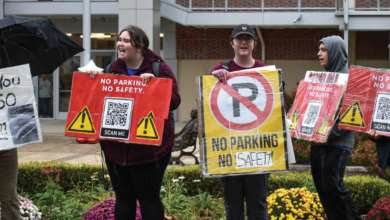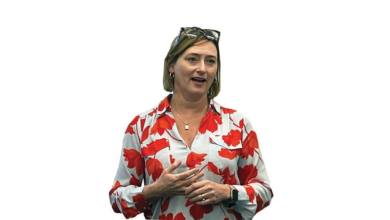Rider announces voluntary separation program results
By Shaun Chornobroff
Thomas Reddington is beloved by those who know him on Rider’s campus. The longtime coordinator for veteran and military affairs is known for making any student connected with the military immediately feel like a of the Rider community.
On March 1, Reddington was notified by the school that he was one of 29 Rider employees selected for the school’s voluntary separation program, a cost- cutting measure Rider is deploying to slash its debt, allowing full-time non-faculty employee volunteers to take a financial package to leave the school. Reddington’s last day was March 4.
“I guess, I just figured, might as well just apply for it and see what happens kind of deal because I figure, if Rider is asking people to leave, things can’t be too good,” Reddington said with a laugh. “At the time, I figured it made sense for me to at least apply to it.”
Rider President Gregory Dell’Omo said in a March 1 campus-wide update that initial analysis showed the program will lead to $2.5 million in annual savings, which he described as “a positive step forward toward addressing Rider’s financial challenges.”
Rider received 49 applicants for the program by the Feb. 24 deadline, of which 59.2% were accepted. In the March 1 email, Dell’Omo said that the decisions were based on “whether accepting an application would create a beneficial, ongoing cost savings to the university through permanent elimination of that position.”
“When we put the program out there and we said ‘we assess everybody’s application,’ we weren’t assessing people per se, we were assessing positions and there are certain positions that we felt that we simply could not do without,” Dell’Omo said in a March 8 interview with The Rider News.
The large number of declined applicants was not a surprise to leaders of Rider’s chapter of the American Association of University Professors (AAUP). The faculty union has been at odds with Dell’Omo and his administration this school year, last month calling on the Board of Trustees to remove him from his position.
“The large amount of people who were denied this buyout shows you exactly what the AAUP has always said. They have a list,” AAUP President Barbara Franz said confidently. “They already had a list of names before they even proposed this policy.”
Dell’Omo emphatically denied the notion when asked by The Rider News.
“If it’s purely a numbers game based on finances, enrollment and those kinds of direct economic measures, then it could have been done in five minutes,” Dell’Omo said. “Just like the voluntary separation plan, if we just wanted to cut X number of positions, we’d just take whatever voluntary separation application comes forward and say fine, we’re going to accept them. We assess them based on the needs of the university and figure out how we need to run the university.”
The program is one of Rider’s first major steps in attacking a projected $20 million for the upcoming fiscal year as it tries to make itself financially sustainable for the long term.
The voluntary separation program is a possible precursor to layoffs. The university website explains that unless the response from the voluntary program is sufficient to meet the school’s benchmarks, involuntary separations will follow.
In a Jan. 27 interview with The Rider News, three days after the announcement of the voluntary separation program, Dell’Omo said the decisions behind the voluntary and the potential for layoffs were made because of financial necessity.
“We would love to avoid voluntary and involuntary. Like I said, nobody likes these things,” Dell’Omo said. “You’d love to be able to be riding in at very least a balanced budget environment, if not creating surpluses for the university. It gets to the point where you have to bring your budget in line … hopefully we do it in a way that’s as sensitive and as caring as possible to everybody involved in the university.”
Those accepted to the voluntary program, like Reddington, will receive a severance package equivalent to one week’s pay per year of service that can accumulate over a period of six to 26 weeks, in addition to reimbursements of healthcare costs during the period.
However, any employee laid off will only receive a package of one week’s pay per year of service for a minimum of two weeks and only up to 12 weeks. Any employees laid off will not receive reimbursement of health care costs during the period, according to the university website.
While Dell’Omo said no official decision had been made on layoffs, Reddington — a retired member of the military who was not reliant on his position to “pay the bills” — said the potential was a factor in his decision to volunteer.
“That’s definitely part of the motivation because they basically said, we’re doing a voluntary separation and then we’ll see who applies and how the chips fall, and then we’re doing involuntary,” Reddington explained. “Definitely that’s a motivator to apply for it because the involuntary would be coming after that and you could just get laid off and be gone anyway.”


